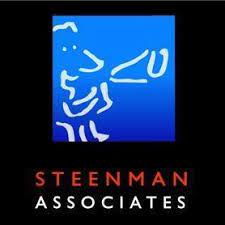In comparing OTT and programmatic advertising to index-based broadcast or cable TV; comparing the cost per thousand (CPM’s) of impressions each media delivers has been the traditional approach. Other factors typically considered in this type of analysis are factors such as age, sex, geography, rating survey area, live versus delayed viewing, etc. Here you might see comparable CPM’s for a linear or traditional TV buy when compared to OTT. However, this level of analysis fails to account for the targeting advantages OTT delivers in the ability to target in-market shoppers. Assuming that 11.51% (14.8 MM SAAR projected for 2020) of U.S. households plan a new vehicle purchase within a year, and assuming a three-month purchase cycle, counting only those “in-market shoppers” would result in an adjusted broadcast/ cable CPM easily in the $500+ range vs. a $30-40 CPM for OTT. While this analysis assumes that 100% of the OTT campaign is in fact targeted to in-market shoppers, the magnitude of a 10-fold difference in effective reach vs. cost builds a strong case in favor of the OTT model.
OTT advertising also offers some key advantages compared to other digital platforms such as YouTube and facebook. While both YouTube and facebook offer the targetability of in-market shoppers, the granularity available in the attribution of OTT campaigns is currently not easily duplicated in either of those media. Another advantage unique to the OTT platform is the high view thru rate of the video campaigns which often exceed 95%. This means that OTT video messaging has a high completion rate. Compare this to YouTube with a view completion rate in the 31% range (bigcommerce.com) or facebook where the scrolling nature of the format also translates into a low completed view-thru on the video ads.
Improved Targeting
OTT ads can be targeted by geography (typically zipcodes or cable zones if you are buying it from a cable provider), demographics (age, sex) and for automotive advertisers, you can select things like ‘in-market for an SUV’, or “in-market for a Toyota”. Using a combination of POLK and Experian data, you can both include and exclude certain buying segments (want an SUV buyer, but don’t want a Nissan buyer, for example). The more you narrow the segments, the more you pay and you want to be careful not to narrow the segments to the point that you are working with too small of a data set. Typically a good rule of thumb is to look at the budget you want to spend (3k to 5k per month is a good place to start), look at the fact that you want to reach each viewer with a reasonable frequency (say 5x monthly), and see what size population and targeting that leaves you with- and adjust accordingly from there.
Reporting and Attribution
This is an area where I see the most difference between providers. A basic, bare bones report should include at least (1) a list of the networks or websites where the ads played (2) number of impressions delivered (3) video completion rate. A higher reporting level may include attribution to show you (4) how many people that viewed your OTT ad visited your website (website lift) (5) how many in-market shoppers that saw your ad visited “A” Dealership, (6) how many in-market shoppers that saw your ad visited YOUR dealership in the form of a cost per arrival. Additionally, you are also able to see which ad creative and offers generated the most engagement allowing a/b testing of different messaging to improve campaign effectiveness over time.
Finding the best program and value for you.
OTT ads are typically delivered on a variety of devices within the household including TV’s, desktop or laptop computers, tablets or mobile phones. Running an ad on the largest screen in the house, in a long form TV show is a much different environment than running the same ad on a laptop or cell phone. Ads watched on the ‘big screen’ are fully watched nearly 98% of the time. Contrast that to YouTube or facebook where most ads are viewed for under :05 seconds.
Ads are most typically sold on a CPM basis (CPM stands for Cost Per Impression). Cost per impression for the big screen can be as much as 5x that of other positions. Knowing this will help you to more accurately compare different offers. Since novice buyers may just blindly compare CPM’s looking for the cheapest deal, some providers will include things like in-banner video (think video display ad) and other delivery pieces to make the overall CPM look more attractive. Beware of making a decision based solely on price, ASK the provider what portion of the campaign will deliver on smart TV’s on LFP (long format programming) as opposed to other devices.
As you would expect, every vendor has rationale as to why their product is the best and so it is helpful to look at competing offers or work with someone agnostic. For our clients we are knowledgeable regarding all the major DSP’s and resellers and are able to choose among the marketplaces to customize a program that best fits a dealerships’ unique needs while still delivering a landed cost below what many of the majors charge.
Pricing varies across vendors and platforms and is also sold at auction meaning it fluctuates depending on daily market conditions. As of today, a reasonable planning rate for a blended CPM would start around $18 per thousand with automotive specific packages incorporating purchase intention data, responsive formatting and full attribution costing more.
With precision targeting capabilities, new messaging options, enhanced tracking, and a lower cost relative to traditional TV, OTT is well positioned to drive a higher ROAS for your dealership. The time is now to take advantage of this exciting new opportunity to promote your store.
